The Orvis Knot is a common fly fishing knot that attaches a fishing line to a hook, lure, or swivel.
Its name comes from the popular Orvis fly fishing gear company. 27 years ago, they held a competition to find out the best knot for tying into a hook. Larry Becker won with the knot that we know today as the Orvis Knot.
Quick Guide: Tying the Orvis Knot
To tie an Orvis Knot, pass the tag end through the eye of the hook. Then take it around the standing end and through the loop near the eye of the hook from the back. Finally, wrap it twice around itself to finish the knot.
Before tightening, lubricate the knot with saliva or water to avoid damage to the fishing line from friction heat. To tighten it, hold the hook in one hand while pulling the tag and standing ends in the opposite direction. Finally, cut off the tag end.
The Orvis Knot is easy to remember with this phrase: “behind, behind, behind, and behind”. You have to go around with the tag end from behind four times in a row to finish the knot.
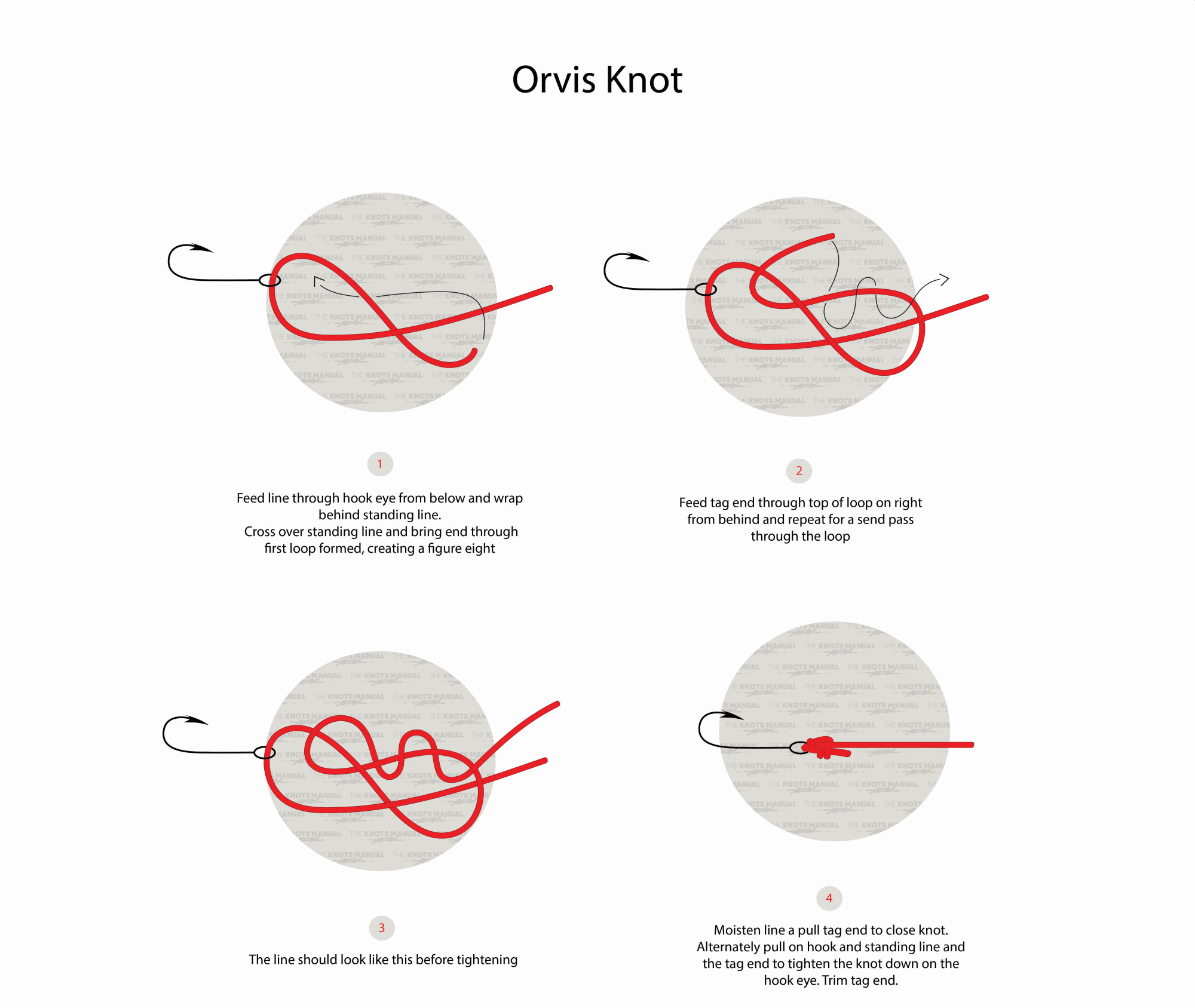
Pros and Cons of the Orvis Knot
The main advantage of the Orvis Knot is that it is very easy to tie and remember. You can tie it very quickly even in freezing weather and during the night.
It also works with all types of fishing lines, including monofilament, fluorocarbon, and braided lines.
The Orvis Knot is considered to be one of the most reliable knots for tying into a hook. It’s said to have a close-to 100% line-breaking strength, although there haven’t been any tests that would prove this.
It has a very small profile, which means that it’s less likely to catch the attention of fish. Its only downside is that when tightened, the tag end exits from the side. This means that it’s more likely to get caught in the grass.
Common Uses for the Orvis Knot
The Orvis Knot is used almost exclusively in fly fishing to attach a fishing line to a hook, lure, or swivel. It’s useful for this purpose because it’s easy to tie, reliable, works with all types of fishing lines, and has a small profile. So if you’d have to learn only one knot for this purpose, then the Orvis Knot is a great option.
Knots Like the Orvis Knot
Trilene Knot: Another strong knot for attaching a fishing line to a hook, lure, or swivel. It’s relatively easy to tie, but it doesn’t work very well with braided fishing lines. With monofilament and fluorocarbon ones, it has a 100% fishing line-breaking strength.
Palomar Knot: A very reliable and easy-to-tie knot that also works with all types of fishing lines, just like the Orvis Knot. Its only downside is that it can’t be used if the eye of the hook is very small because it requires the line to be folded in half before tying.
Improved Clinch Knot: One of the easiest and most popular fishing knots for attaching to a hook. It’s very reliable, but it doesn’t work well with very thick lines and with braided ones.
Uni Knot: Although the Uni Knot isn’t as strong as the Orvis Knot, it’s still very reliable. It works with all types of fishing lines, and you can also use it when you need to connect two fishing lines. It’s considered to be the best all-purpose fishing knot.
Snell Knot: A knot that wraps directly around the straight end of the fishing hook. It’s tied almost like the Uni Knot, only in the other direction.
Eye Crosser Knot: A simple, but reliable knot to attach to a hook, lure, or swivel. Tests have shown that it’s one of the most reliable knots out there, outperforming other popular knots, like the Orvis Knot.
Step-By-Step Guide: How to Tie the Orvis Knot
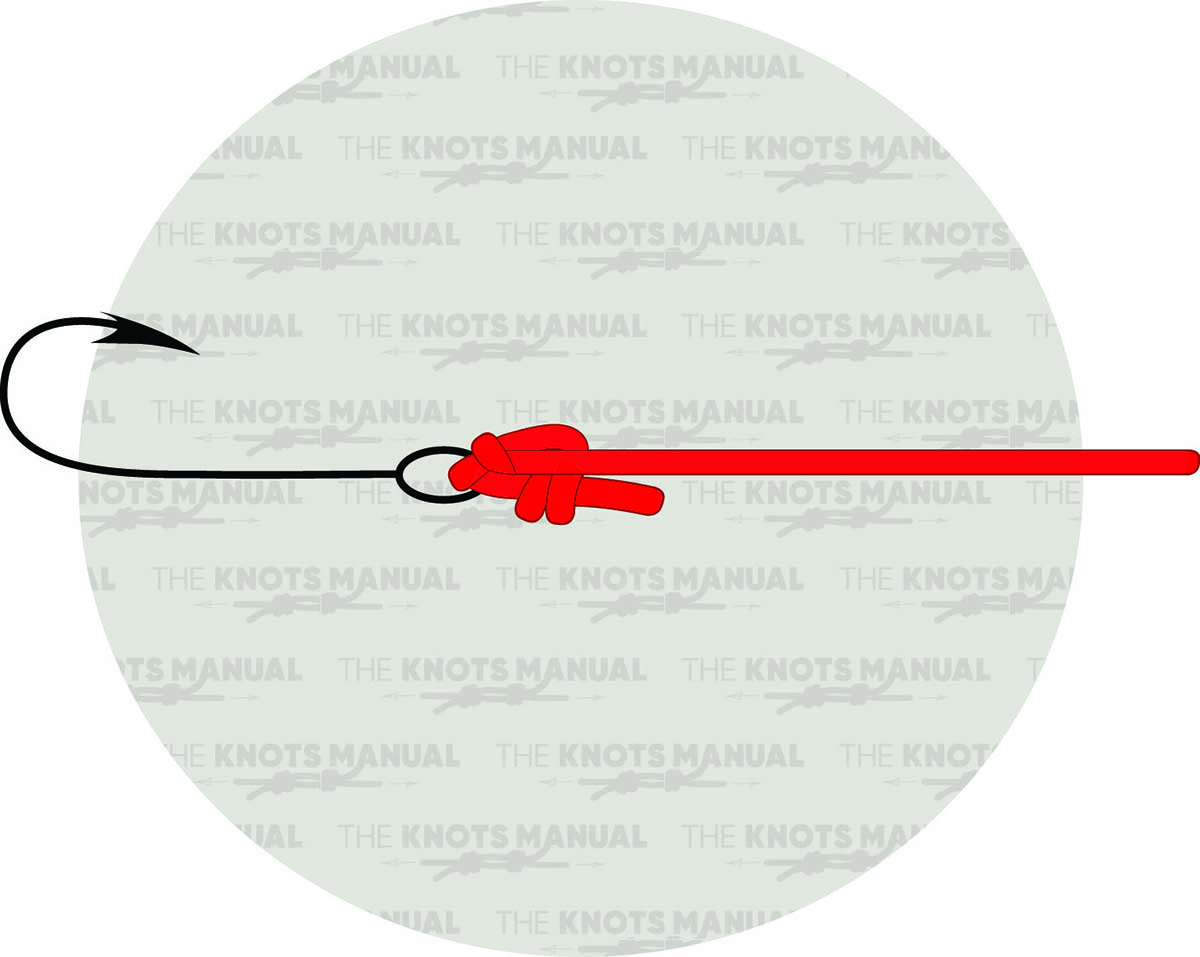
A step-by-step guide on how to tie the Orvis Knot.
Step 1:
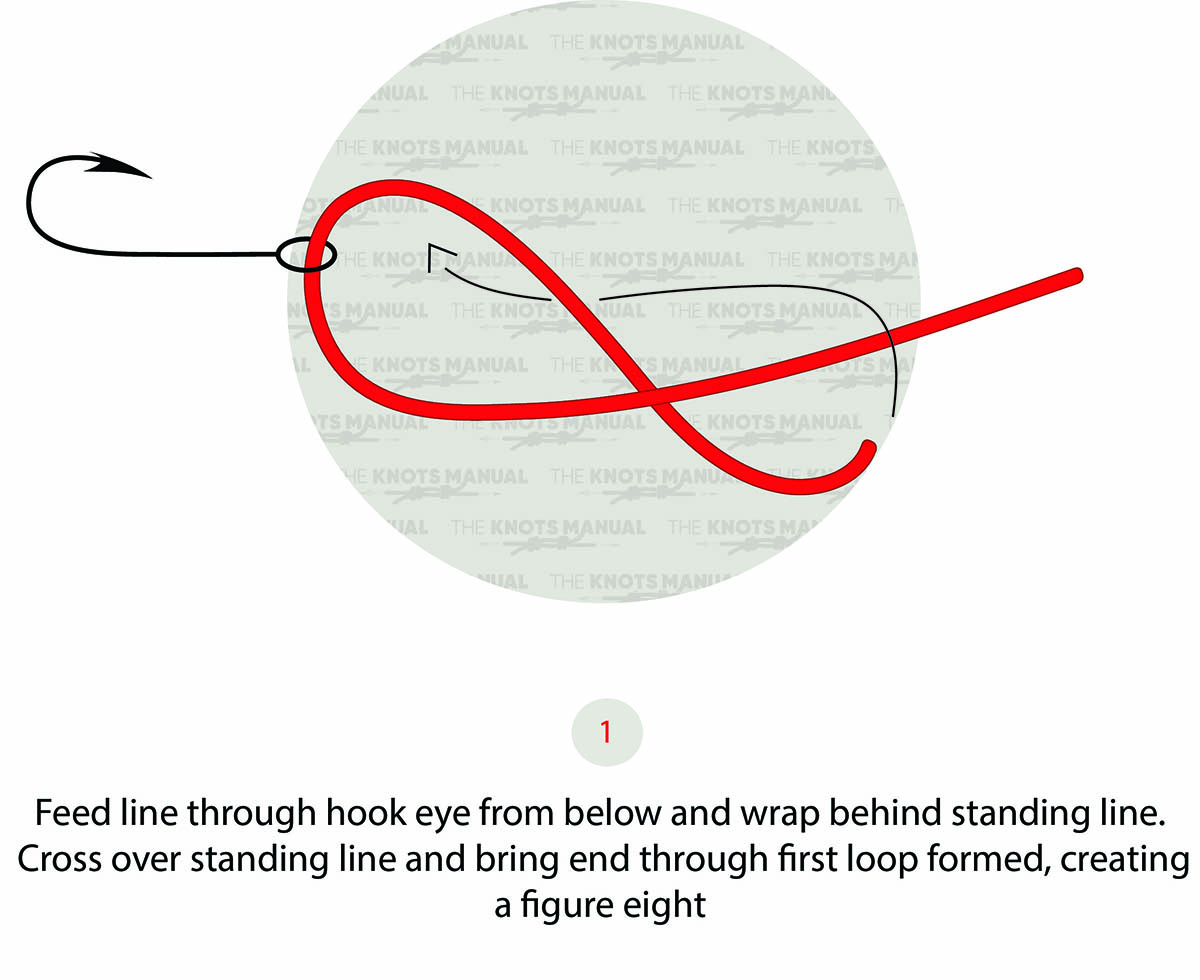
Pass the tag end through the eye of the hook, behind the standing end, over it, and back through the loop. This will form a Figure 8 Knot.
Step 2:
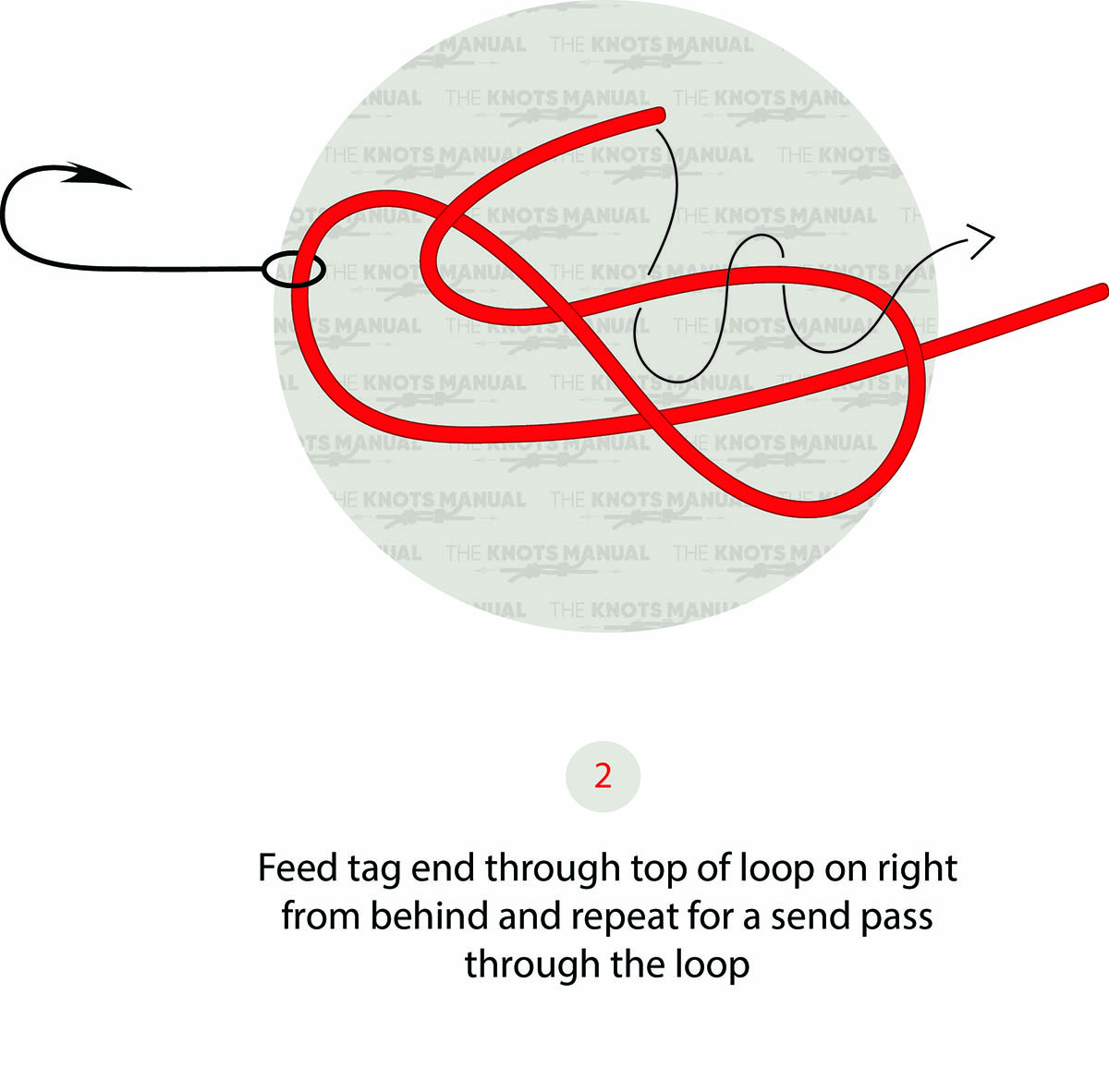
Wrap the tag end around itself twice, as illustrated above.
Step 3:
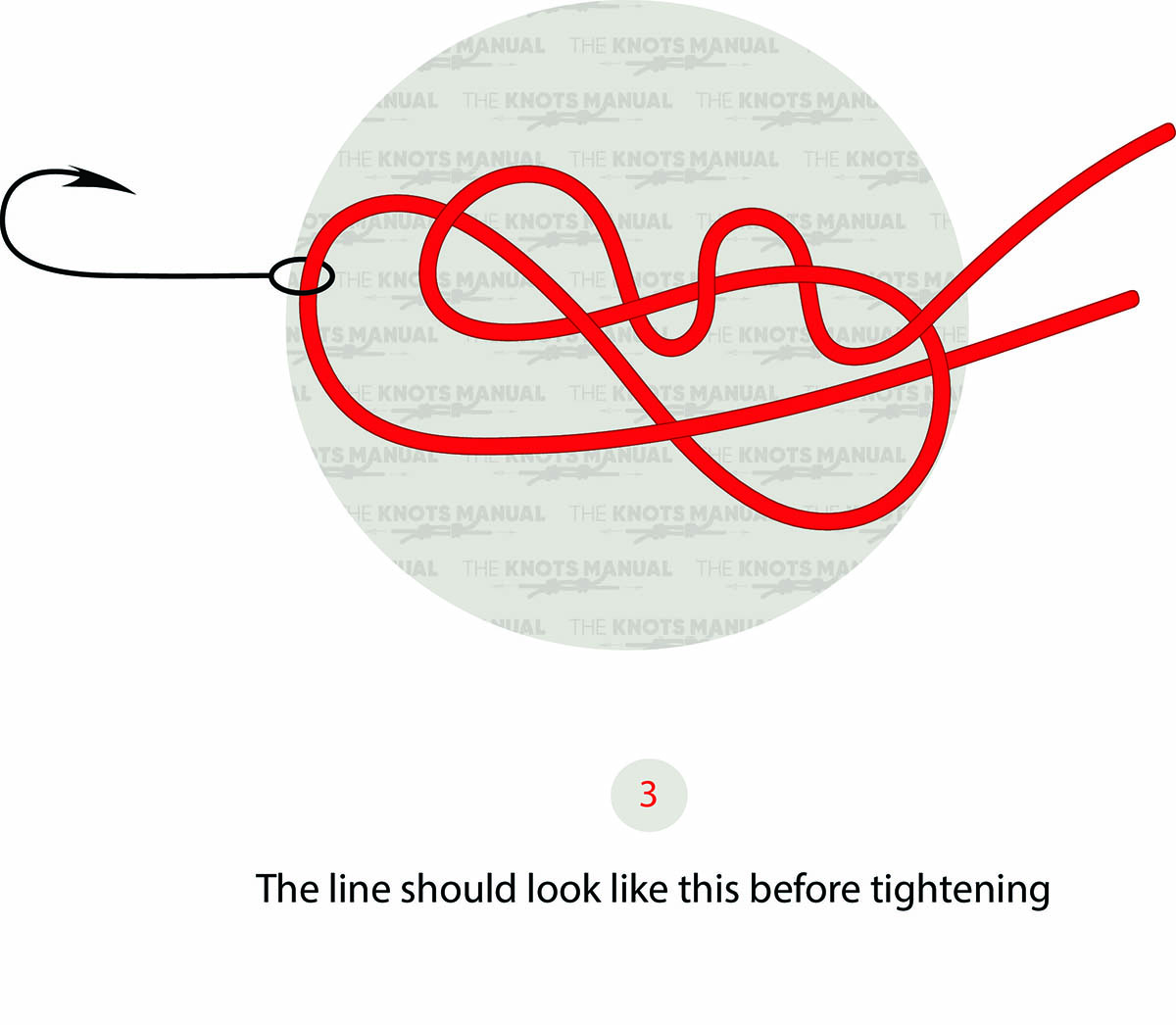
Lubricate the knot before tightening.
Step 4:
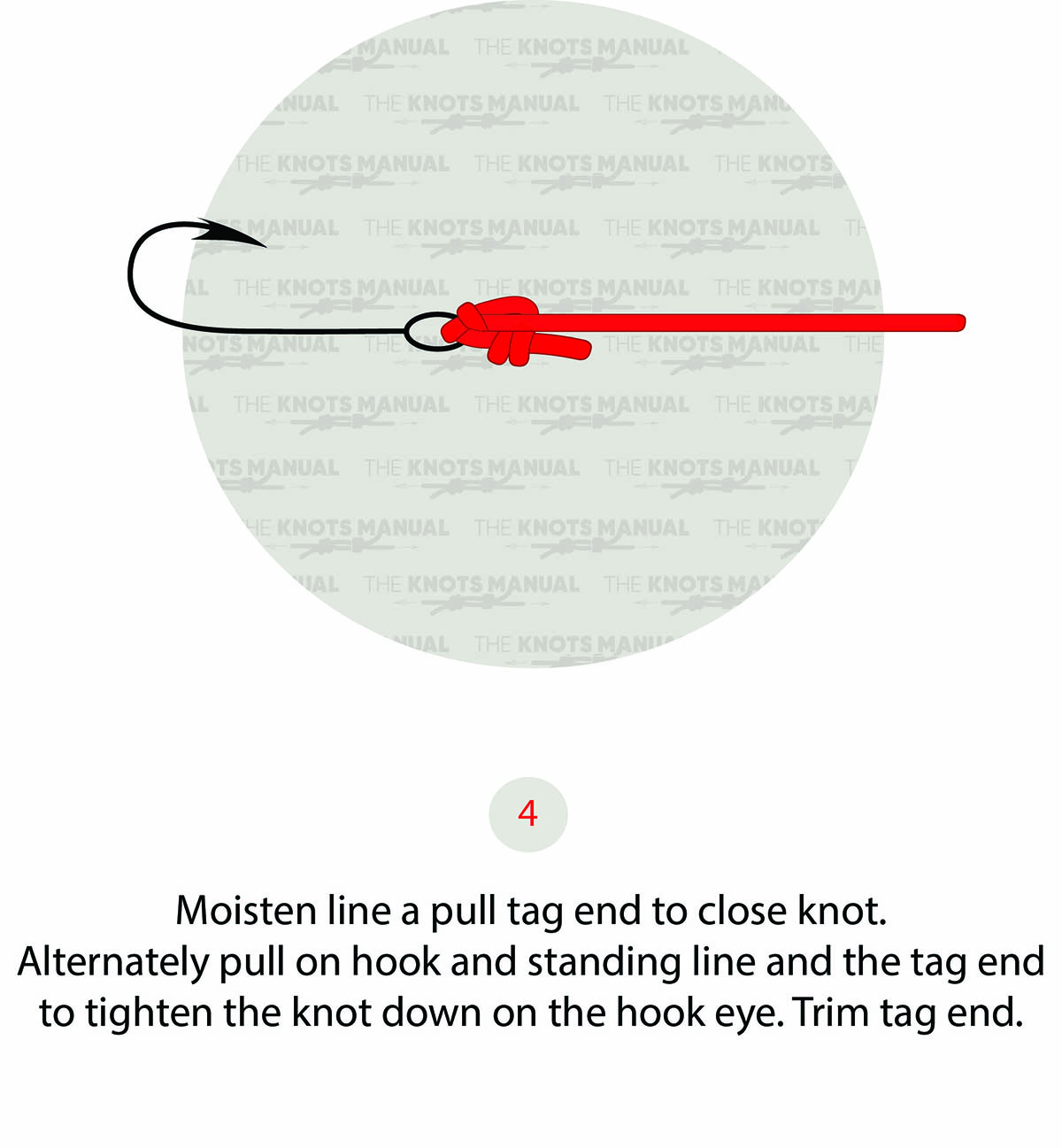
Tighten the knot by pulling the tag end, the standing end, and the hook. Cut off the tag end to finish the knot.
